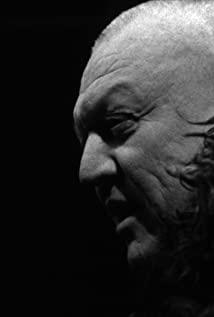View more about Werckmeister Harmonies reviews
"Whale Circus" Bella Tal
Gina 2022-01-17 08:02:33
-
János Valuska: You are the sun. The sun doesn't move, this is what it does. You are the Earth. The Earth is here for a start, and then the Earth moves around the sun. And now, we'll have an explanation that simple folks like us can also understand, about immortality. All I ask is that you step with me into the boundlessness, where constancy, quietude and peace, infinite emptiness reign. And just imagine, in this infinite sonorous silence, everywhere is an impenetrable darkness. Here, we only experience general motion, and at first, we don't notice the events that we are witnessing. The brilliant light of the sun always sheds its heat and light on that side of the Earth which is just then turned towards it. And we stand here in it's brilliance. This is the moon. The moon revolves around the Earth. What is happening? We suddenly see that the disc of the moon, the disc of the moon, on the Sun's flaming sphere, makes an indentation, and this indentation, the dark shadow, grows bigger... and bigger. And as it covers more and more, slowly only a narrow crescent of the sun remains, a dazzling crescent. And at the next moment, the next moment - say that it's around one in the afternoon - a most dramatic turn of event occurs. At that moment the air suddenly turns cold. Can you feel it? The sky darkens, then goes all dark. The dogs howl, rabbits hunch down, the deer run in panic, run, stampede in fright. And in this awful, incomprehensible dusk, even the birds... the birds too are confused and go to roost. And then... Complete Silence. Everything that lives is still. Are the hills going to march off? Will heaven fall upon us? Will the Earth open under us? We don't know. We don't know, for a total eclipse has come upon us... But... but no need to fear. It's not over. For across the sun's glowing sphere, slowly, the Moon swims away. And the sun once again bursts forth, and to the Earth slowly there comes again light, and warmth again floods the Earth. Deep emotion pierces everyone. They have escaped the weight of darkness
Mr. Hagelmayer: That's enough! Out of here, you tubs of beer!
János Valuska: But Mr. Hagelmayer. It's still not over.
-
György Eszter: I have to make it clear that not even for a moment is there doubt that it is not a technical but a philosophical question. So that the tonal system in question, through researches, has led us inevitably to a test of faith, in which we ask: on what do we base our belief that this harmony, the core of every masterpiece, referring to its own irrevocability, actually exists or not. From this it follows that we should speak of, not research into music, but a unique realization of non-music which for centuries has been covered up and a dreadful scandal which we should disclose. Hence the shameful situation that all the intervals in the masterpieces of many centuries are false. Which means that music and its harmony and echo, its unsurpassable enchantment is entirely based on a false foundation. Yes, we have to speak of an indisputable deception, even if those who are less sure, a little moderate, babble on about compromise. But what kind of compromise, when for the majority pure musical tonality is simply illusion, and truly pure musical intervals do not exist? Here we have to acknowledge the fact that there were ages more fortunate than ours, those of Pythagoras and Aristoxenes, when our forefathers were satisfied with the fact that their purely tuned instruments were played only in some tones, because they were not troubled by doubts, for they knew that heavenly harmonies were the province of the gods. Later, all this was not enough, unhinged arrogance wished to take possession of all the harmonies of the gods. And it was done in its own way, technicians were charged with the solution, a Praetorius, a Salinas, and finally an Andreas Werckmeister, who resolved the difficulty by dividing the octave of the harmony of the gods, the twelve half-tones, into twelve equal parts. Of two semi-tones he falsified one, instead of ten black keys, five were used and that sealed the position. We have to turn our backs on this development of tuning instruments, the so-called constant-tempered, and its sad history and bring back the naturally tuned instrument. Carefully, we have to correct Werckmeister's mistakes. We have to concern ourselves with these seven notes of the scale, but not as of the octave, but seven distinct and independent qualities like seven fraternal stars in the heavens. What we have to do then, if we are aware, is that this natural tuning has its limits and it is a somewhat worrisome limit that definitely excludes the use of certain higher signatures.









